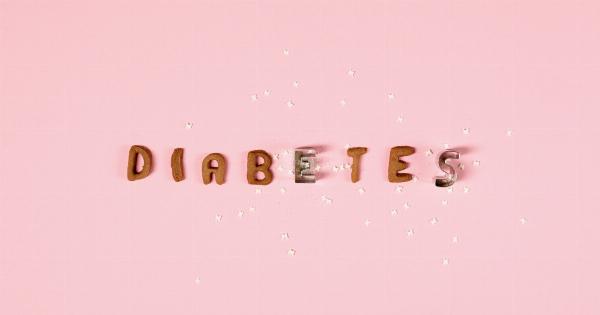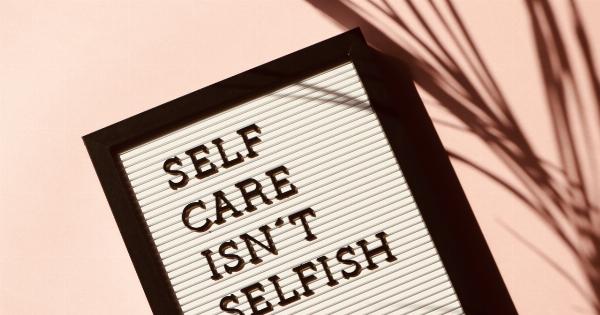Young adulthood is a time of excitement, exploration, and self-discovery. However, it is also a phase of life where individuals are more likely to engage in high-risk behaviors.
High-risk behaviors are those that have potential negative consequences, either immediately or in the long-term. These behaviors can affect physical, mental, and emotional health, as well as relationships, academics, and future prospects. Here are some of the high-risk behaviors that young adults are more prone to engage in:.
1. Substance Abuse
Substance abuse is one of the most common high-risk behaviors among young adults. This includes the misuse of alcohol, prescription drugs, and illicit drugs.
Substance abuse can lead to addiction, health problems, accidents, legal problems, and social isolation. According to the 2019 National Survey on Drug Use and Health, about 14.9 million young adults aged 18-25 had used illicit drugs in the past year, and about 9.7 million had engaged in binge drinking.
2. Unsafe Sex
Young adults are also more likely to engage in unsafe sex, including unprotected intercourse, casual sex, and sex with multiple partners. Unsafe sex can lead to unintended pregnancies, sexually transmitted infections (STIs), and emotional distress.
According to the Centers for Disease Control and Prevention (CDC), there were about 1.7 million cases of chlamydia, 583,405 cases of gonorrhea, and 115,045 cases of syphilis reported in the USA in 2018, mostly among young adults aged 15-24.
3. Reckless Driving
Reckless driving is another high-risk behavior that young adults are prone to engage in. This includes driving under the influence of alcohol or drugs, speeding, texting while driving, and not wearing seatbelts.
Reckless driving can result in accidents, injuries, and fatalities, not only for the driver but also for passengers, pedestrians, and other drivers on the road. According to the National Highway Traffic Safety Administration (NHTSA), there were 9,378 fatalities in motor vehicle crashes involving drivers aged 15-24 in 2019.
4. Gambling
Gambling is a high-risk behavior that can lead to addiction, financial problems, and psychological distress. Young adults are more likely to engage in gambling, especially online and social media gambling, than other age groups.
According to the National Council on Problem Gambling, about 2 million young adults meet the criteria for gambling addiction, and about 6 million are at risk of developing it. Gambling addiction is also associated with higher rates of depression, anxiety, and suicide.
5. Eating Disorders
Eating disorders are high-risk behaviors that can affect physical and mental health, self-esteem, and relationships. Young adults, especially females, are more likely to develop eating disorders, such as anorexia, bulimia, and binge eating disorder.
Eating disorders are often triggered by stress, peer pressure, media influence, and low self-worth. According to the National Eating Disorders Association, about 20 million women and 10 million men in the USA will have an eating disorder at some point in their lives, and about 50% of them will develop it before age 20.
6. Self-Harm
Self-harm is a high-risk behavior that involves intentionally hurting oneself, either physically or emotionally. This includes cutting, burning, hitting, hair pulling, and substance abuse.
Self-harm is often a sign of underlying mental health issues, such as depression, anxiety, trauma, or substance abuse. Young adults are more likely to engage in self-harm, especially if they feel stressed, powerless, or isolated.
According to the American Psychological Association, about 17% of young adults have engaged in self-harm, and about 50% of them have attempted suicide.
7. Cyberbullying
Cyberbullying is a high-risk behavior that involves using the internet and social media to harass, humiliate, or threaten others. Young adults are more likely to engage in cyberbullying, either as victims or perpetrators.
Cyberbullying can have serious psychological effects, such as anxiety, depression, social withdrawal, and suicide ideation. According to the Cyberbullying Research Center, about 34% of young adults have experienced cyberbullying, and about 15% have cyberbullied others.
8. Overspending
Overspending is a high-risk behavior that involves spending more money than one can afford or need. Young adults are more likely to overspend, especially on discretionary items, such as clothing, entertainment, and electronics.
Overspending can lead to financial difficulties, debt, and stress. According to a report by Bankrate, about 58% of young adults aged 18-24 have overspent their budget, and about 40% have credit card debt.
9. Skipping School or Work
Skipping school or work is a high-risk behavior that can have negative consequences, such as poor academic performance, job loss, and legal problems.
Young adults are more likely to skip school or work, especially if they feel bored, unchallenged, or overwhelmed. Skipping school or work can also be a sign of underlying mental health issues, such as anxiety, depression, or substance abuse.
According to a report by The Brookings Institution, about 20% of young adults aged 18-24 are not in school or working, and about 10% are unemployed and not looking for a job.
10. Social Isolation
Social isolation is a high-risk behavior that involves withdrawing from social interactions, relationships, and activities. Young adults are more likely to experience social isolation, especially if they feel insecure, misunderstood, or rejected.
Social isolation can lead to loneliness, depression, anxiety, and poor mental health. According to a report by the Cigna Foundation, about 60% of young adults aged 18-22 feel lonely, and about 25% have no close friends.
Conclusion
High-risk behaviors are common among young adults but can have serious consequences for their health and future. It is important to understand the underlying causes and risk factors of these behaviors and to seek help and support when needed.
Education, prevention, and intervention programs can help young adults develop healthy habits, coping skills, and resilience, and reduce the incidence and impact of high-risk behaviors.































